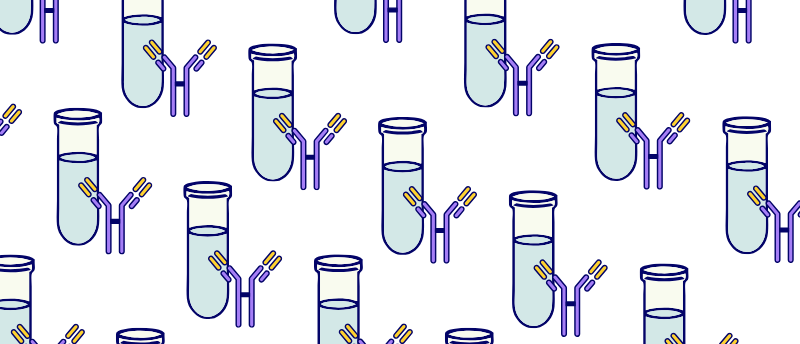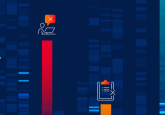60-seconds with Francis Dessy & Ivo Sonderegger: Harmonization of vaccine ligand binding assays validation

Meet the authors

Ivo Sonderegger
Global Head of Clinical Bioanalysis & Assay Strategy
Takeda (Opfikon, Switzerland)
Ivo Sonderegger holds a PhD in Immunology from the Swiss Federal Institute of Technology (Zürich, Switzerland). He has more than 15 years of experience in preclinical and clinical bioanalysis. Ivo worked for multiple years as a Scientist at Molecular Partners (Zürich, Switzerland), focusing on preclinical immunogenicity assessment. Afterward, Ivo transitioned to Boehringer Ingelheim (Ingelheim, Germany) where he was responsible for the clinical bioanalysis and comparative immunogenicity assessment of multiple biosimilar drug candidates. In this role, he successfully supported the regulatory submission of Boehringer’s first biosimilar product. After working in the regulated bioanalysis group at Hoffmann-La Roche (Basel, Switzerland), he joined the Takeda (Opfikon, Switzerland) Vaccine Business Unit, serving as Clinical Serology Strategy Lead and later as Global Head of Clinical Bioanalysis. In these roles, he played a key role in the submission and licensure of Takeda’s dengue vaccine.

Francis Dessy
Director and Senior Advisor of Regulatory, Assay Development & Innovation
GSK (Rixensart, Belgium)
Francis Dessy holds a Master of Biological Sciences degree from the Faculty Notre-Dame de la Paix at the University of Namur (Belgium). He joined the vaccine pharmaceutical industry (SmithKline Beecham, now GSK; Rixensart, Be) in 1999 as a Clinical Immunology Scientist. For 15 years, Francis lead a team in charge of the development, validation and use of vaccine clinical trials of viral functional assays for polio, mumps, HSV, VZV, HPV, Flu, Dengue and CMV. He is currently Director and Senior Advisor, overseeing and mentoring the development, validation, maintenance and troubleshooting of clinical assays for more than 10 years (functional, LBA, CMI or molecular biology) used in vaccine clinical trials, as well as the assay-related interactions with regulators.
You can read the full paper here: Harmonization of Vaccine Ligand Binding Assays Validation
What is the paper about?
General principles on assay validations are described in multiple regulatory guidelines and White Papers. However, expectations specific to vaccine clinical assays are lacking.
The publication ’Harmonization of vaccine ligand binding assays validation’ gives recommendations on how to qualify and validate ligand binding assays that support the clinical development of vaccines. It also describes the broader context of the global assay life cycle for vaccines.
The White Paper is not intended to be prescriptive but rather presents a panel of possible options when defining assay performance parameters, with considerations on their pros and cons with regards to the assay’s intended use.
Why have the authors decided to write this White Paper?
The pace of vaccine development is increasing. The COVID-19 crisis, along with the urgent need for accelerated vaccine development, has further increased expectations for faster clinical development, including assay validation and clinical testing.
During several WRIB conferences (Workshops on Recent Issues in Bioanalysis), industry experts have emphasized the specificity of vaccine clinical assays and the need for clear guidance on their qualification and validation. Such guidance would help establish clear expectations and streamline the assay qualification and validation process.
In response to this need, a group of vaccine bioanalysis experts, with the support of WRIB, have decided to bring together the industry, research institutes and regulators to harmonize vaccine clinical assay validation. This publication is the first one and is focused on ligand binding assays.
Who do you hope will benefit from this publication?
All companies and institutions that develop vaccines and perform clinical trials should benefit from a guidance document on how to qualify, validate and control the stability of ligand binding assays. We are confident that this publication makes a positive contribution by aligning the industry and regulator’s expectations.
What were the biggest challenges when writing this White Paper?
Each clinical development program and each clinical assay has different needs. We wanted to provide sufficient details to clarify expectations for qualifications and validations of clinical assays and, at the same time, give sufficient freedom to allow for adaptation of the strategy to specific requirements
During initial discussions between SMEs, it became rapidly clear that different companies and institutions work in slightly different ways. The differences were related to specific product needs and the reaction to requirements set by the regulators. A challenge was to find a common agreement between the different parties. We are proud to have found an agreement that works for both the industry and the regulator representatives.
What is next? Is there anything you are hoping to achieve in the future in this research area?
This publication is focused on the qualification and validation of vaccine ligand binding assays. White Papers on assay development, assay performance monitoring and assay transfer have been drafted and should be published soon. Moreover, we are considering writing recommendations on vaccine cell-based assays and potentially other technologies. We look forward to continuing to provide recommendations on how to work with assays for vaccine clinical development.
You may also be interested in:
- Editor’s highlights from the 18th WRIB conference 2024
- 19th WRIB
- Interviews Highlights from the 2023 WRIB conference and a look to the future for biomarkers from Jian Wang
Disclaimer: the opinions expressed are solely those of the authors and do not express the views or opinions of Bioanalysis Zone or Taylor & Francis Group.





